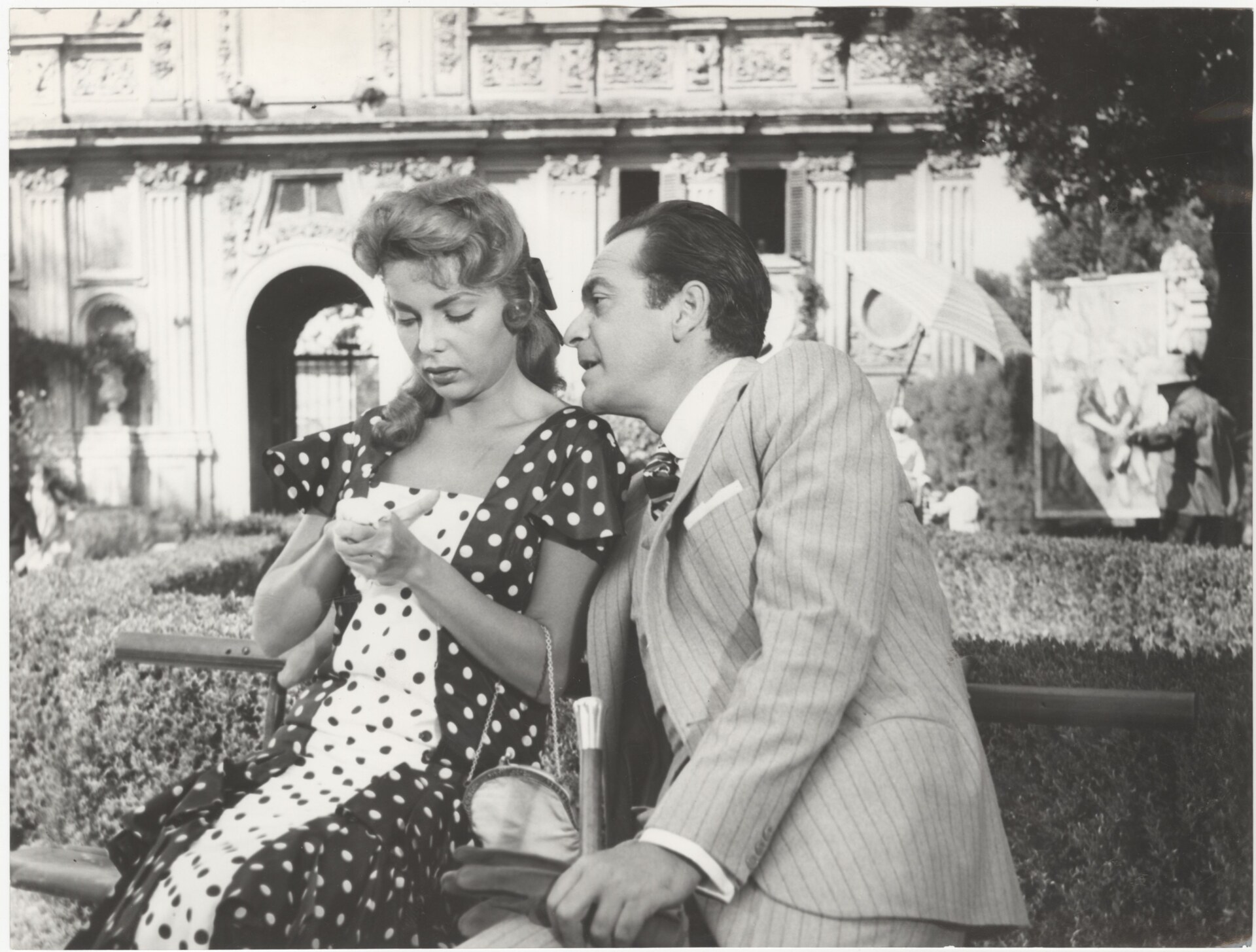Italy, so much of the time, feels like precious preservation. Like a face that ages, yet also stays the same. I have to imagine it’s a shared compulsiveness to wander around, piecing together the abundance of leftover context clues, wondering about the people and things any given place has seen. The spots below are such clues for 1960s Italy, or the Dolce Vita era, a time of pleasure and grandeur. The war was over, the economy was booming, and the country had found a new lust for life. It was a period of progress and pleasure, imaginably marked by Federico Fellini’s Oscar-winning film, La Dolce Vita (1960). As Anita Ekberg took her iconic dip in the Trevi Fountain, audiences marveled and a new lifestyle was born.
A succession of extraordinary actresses—Sophia Loren, Monica Vitti, Claudia Cardinale, Gina Lollobrigida—led the way, collectively transforming Italian cinema and the country’s viewpoints on beauty, femininity and art. The country has not seen such a cast since.
Italy’s most beloved and iconic actress, Sophia Loren, was at the forefront of the Golden Age of Hollywood cinema. Perhaps most notably known for her performance in the 1961 film Two Women (La ciociara), Loren has appeared in over 100 films throughout her career, picking up an impressive list of awards, Golden Globes, and Oscars along the way.
Deemed “the queen of Italian cinema”, Monica Vitti began her prestigious acting career at age 14, mastered both dramatic and comedic roles, and went on to star in some of Italy’s most iconic productions such as L’Avventura (1960), L’Eclisse (1962), and Red Desert (1964).
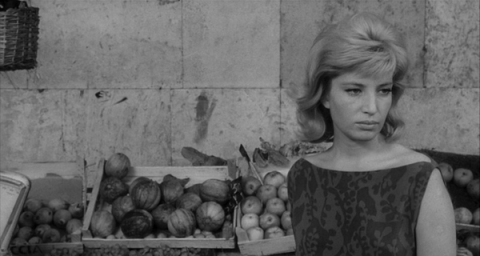
Monica Vitti in L'Eclisse
If Italy had an answer to Brigitte Bardot, it was Claudia Cardinale. Born in Tunisia, Cardinale studied at a film school in Rome, kickstarting the career that earned her multiple awards and features in over 100 films—throughout which she was an outspoken ambassador for women’s rights.
Each an impressive blend of talent, charisma, and glamor, these women breathed new life into post-war Italian film and culture. Their opulence and allure were met with unmatched style and aristocratic poise, and they served as catalysts for cultural change throughout the country. Despite the majority of them having been born into the working class, they became worldwide symbols of the country’s prosperity—perhaps proof that the social stratification of Italy was slowly shifting.
Even today, the spirit of the revered golden era can be found flourishing throughout Italy—you just have to know where to look. Compiled below is a list of Italian actresses’ go-to cafes, restaurants, and nightclubs in the ’60s.
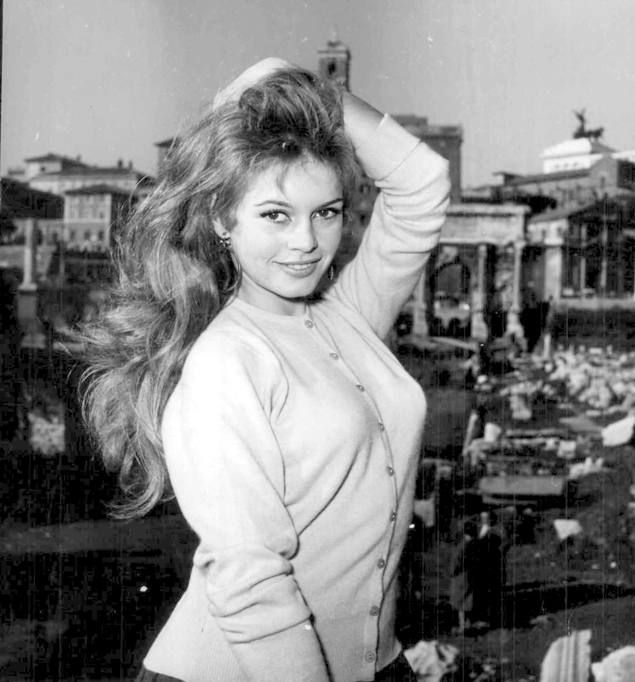
Brigitte Bardot in Rome in 1957
CAFÉS
Caffè del Tasso (Bergamo) – This seemingly immortal cafe dates back to 1476, making it one of the oldest establishments in Italy. Open for breakfast, lunch, and dinner, the cafe lies in Bergamo’s prestigious and beautiful Piazza Vecchia where it’s transformed over the years, but continues to boast a neoclassical style. Musicians, artists, actors and actresses—namely Mariangela Melato and Brigitte Bardot—have passed through these doors for a coffee or a cocktail.
Antico Caffè Greco (Rome) – Situated on the elegant Via Condotti since 1760, Caffè Greco is Rome’s oldest. From numerous wars to political and economic upheavals, this cafe has seen it all, hosting its fair share of international artists, literary figures, and intellectuals along the way. Beyond Monica Vitti, Sophia Loren, and the usual bunch, everyone from Princess Diana to Buffalo Bill has walked through Caffè Greco’s doors. Considered to be just as much a museum as it is a bar, the caffè’s burgundy walls are adorned with memorabilia and provide the perfect backdrop for its ancient marble tables. Today, you can stop in for a coffee or a mezzo caldo, read Il Giornale, and take in the rich history of the space.
Café de Paris (Rome) – On Via Veneto, the street where it all began, this cafè inspired the 1960 film La Dolce Vita and became immortalized by the frequent visits of the cast—Anita Ekberg included. Throughout the 60s, the cafè hosted artists, the nouveau riche, and prominent global figures, and became a symbol of dolce vita nostalgia through the early 2000s. In 2009, the cafè temporarily closed its doors after it was revealed to be a money laundering front run by the mafia; it was later reopened under new management, much to the chagrin of some unhappy mafia members, who threw grenades at the outdoor tables in 2014—causing it to close permanently. You can still pass by, however, for a quick glimpse of what the cafè once was.
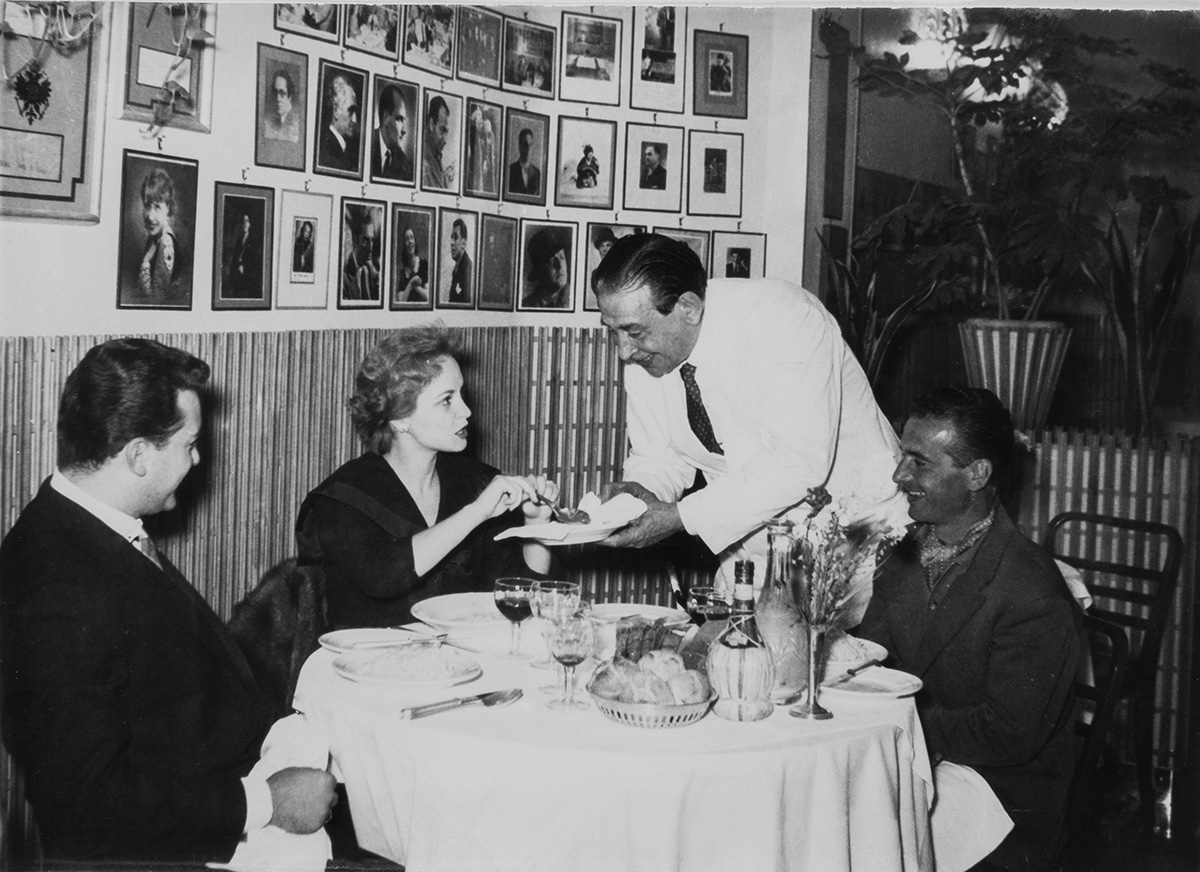
RESTAURANTS
La Capannina (Capri) – For obvious reasons, celebrities have been flocking to the island of Capri since the late 18th century. Not unlike today, Capri in the 60s was a regular destination spot for royals, Hollywood stars, and jet setters. In turn, they would all visit La Capannina. It’s no surprise this cozy trattoria has been the most famous restaurant—and a magnet for the rich and famous—on the island since its opening in 1931.
Da Emilia (Sorrento) – Sophia Loren was a regular at this restaurant while in town to film Pane, amore e… (1955), a fact you will be reminded of by the gallery of photos of her on the dining room wall. Located in Sorrento’s charming Marina Grande, this seaside, family-run restaurant has been serving some of the freshest seafood in Sorrento since 1954. The views of the ocean from the terrace are stunning, and the spaghetti alle vongole is unmissable.
Alfredo alla Scrofa (Rome) – Back in 1914, Alfredo Di Lelio improvised a meal for his sick wife, who had just given birth. The dish he came up with was what we now know as the beloved fettuccine alfredo (many people think the dish is American, but it was created right here). From that day on, he began selling this pasta in his restaurant. In 1920, the dish garnered international fame when Mary Pickford and Douglas Fairbanks enjoyed it on their honeymoon to Rome. The word of this new dish spread quickly, and soon the restaurant was regularly welcoming Sophia Loren, Silvana Pampanini, and Brigitte Bardot.
Pizzeria Negri (Salerno) – This historic pizzeria opened its doors in 1928 and has been met with relentless popularity ever since. Sophia Loren, Gina Lollobrigida, Vittorio de Sica, Totò, Walter Chiari, and Rossano Brazzi regularly crowded the white linen-draped tables. The pizzeria earned a Michelin star in 1962 and was even a favorite of the Savoys when they came to Campania.
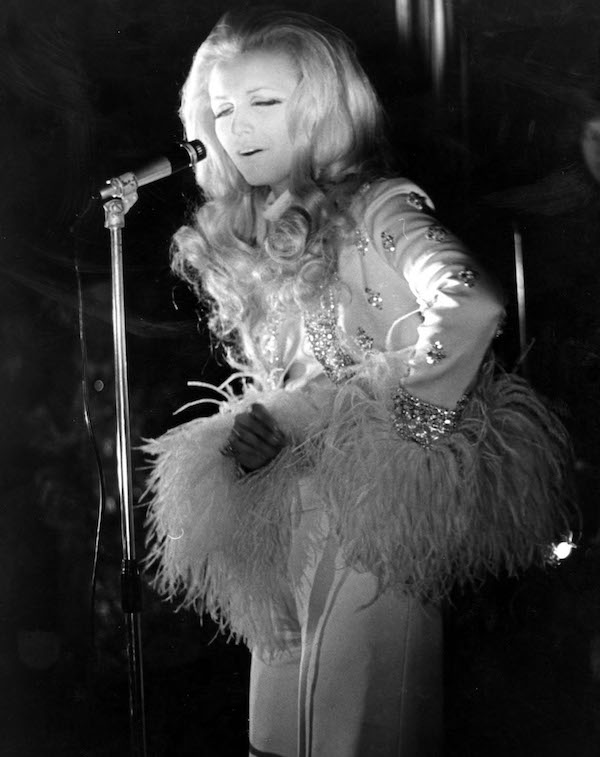
Italian singer Patty Pravo in concert at the Piper Club in Rome, Italy, January 4, 1969. ©Archivio Lapresse
NIGHTLIFE
Harry’s Bar (Rome) – After dark, Via Veneto became one long party with outlandish behavior behind the walls of most bars, restaurants, and clubs. Harry’s Bar was no exception. Perhaps the most well-known celebrity hangout spot of the 60s, Harry’s Bar was founded in 1959 and still attracts visitors on a quest for the Dolce Vita. Its golden year era attracted American directors, producers, actors and actresses from all over: Sophia Loren, Audrey Hepburn, Silvana Pampanini, Marlon Brando, Jean-Paul Belmondo, and Federico Fellini were some of the big-name patrons. Today, you can have a drink, enjoy the piano bar where Frank Sinatra used to play, and allow yourself to be transported back in time.
La Capannina (Forte dei Marmi) – La Capannina is going on a century as an icon of Forte dei Marmi. The nightclub opened in 1929, making it the oldest disco restaurant in the world. Elected as the place to go by the bourgeoisie and nobles, it quickly became the hub of nightlife in Tuscany. The club attracted celebrities from far and wide with live music, retro charm and Tuscan cuisine, and on any given night you might have shared the dance floor with Sophia Loren, Ornella Vanoni, or Virna Lisi. In true Italian fashion, a night at La Capannina goes from dusk to dawn, with plenty of Proseccos and negronis in between.
The Piper (Rome) – More than a traditional nightclub, Rome’s first discotheque opened in February, 1965, and has been buzzing ever since. Located in the affluent district of Parioli, an elite clientele consisting of artists, writers, actors, and filmmakers flocked to this spacious, subterranean basement club to see everyone from The Beatles to The Byrds perform.
_________
While the heyday of the Dolce Vita has passed and the actresses and patrons have packed up and gone home, its echoes of elegance and enjoyment can still be heard. So, the next time you find yourself strolling down Via Veneto or sipping an espresso from the counter of an aforementioned coffee bar, be sure to give a little nod to the talent and fame that once filled these rooms.
